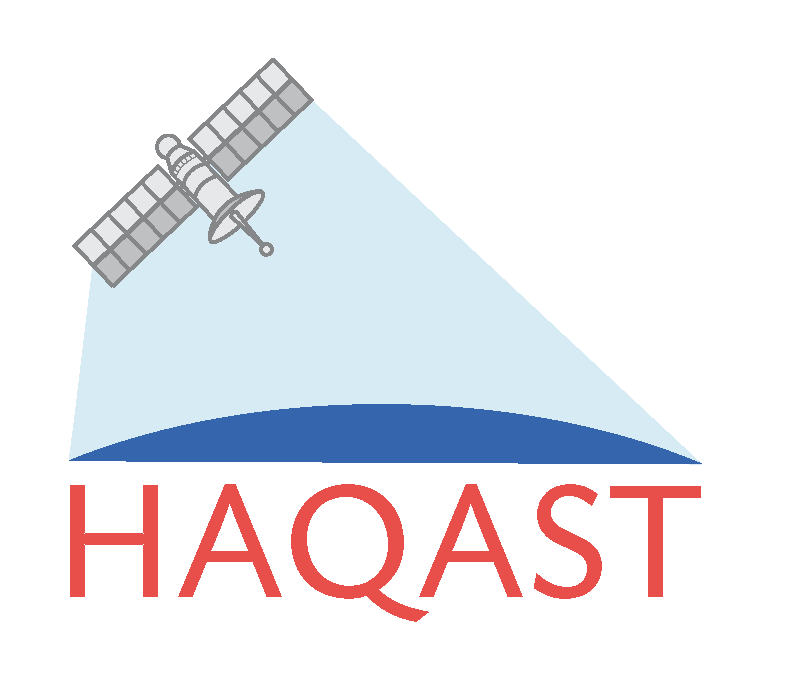Partners
Environmental Defense Fund
One of the world’s leading international nonprofit organizations, Environmental Defense Fund (EDF) creates transformational solutions to the most serious environmental problems. To do so, EDF links science, economics, law, and innovative private-sector partnerships. With more than 3 million members and offices in the United States, China, Mexico, Indonesia and the European Union, EDF’s scientists, economists, attorneys and policy experts are working in 28 countries to turn solutions into action.
- EDF’s commitment to Diversity, Equity and Inclusion
- EDF’s Equity and Environmental Justice Vision and Principles
- The Frontline Resource Institute (FRI, pronounced “free”) supports frontline communities working to advance environmental justice and climate justice by providing the resources and technical assistance to build a world where all can achieve healthy, safe, and sustainable environments.
Darkhorse Visualization
Darkhorse Visualization is a well-known thought leader and creator in the field of data visualization. They specialize in building clear and engaging interactive data tools. Their clients include NGOs such as Opportunity Insights, Environmental Defense Fund, and Wayne State University. Darkhorse Visualization works closely with their clients and often become an extension of their team, helping them achieve their goals. The primary aim of most of these tools is to have a profound and positive impact on society.
Texas A&M University
Texas A&M University is a community of scholars dedicated to solving diverse, real-world problems through determination and innovation. Texas A&M opened its doors in 1876 as the state’s first public institution of higher education and is today a tier-one research institution holding the elite triple land-, sea- and space-grant designations. Research conducted at Texas A&M represented annual expenditures of more than $1 billion in fiscal year 2022. Texas A&M’s 73,000 students and over half a million former students are known for their commitment to service, as well as dedication to the university’s core values and rich traditions.
- TAMU’s Superfund Research Center comprehensively evaluates the complexities of hazardous chemical exposures, potential adverse health impacts, and potential hazards of exposures to complex mixtures through a series of multi-disciplinary projects that derive from a case study utilizing Galveston Bay.
- TAMU’s Center for Environmental Health Research nucleates research and translational activities of faculty and trainees around the overarching theme “Enhancing Public Health by Identifying, Understanding, and Reducing Adverse Environmental Health Risks.” It builds on Texas A&M University’s history of state-wide outreach with a focus on underserved populations to achieve this vision by identifying and addressing environmental health concerns of affected communities and populations and facilitating multidisciplinary collaborations.
Texas A&M Transportation Institute
The Texas A&M Transportation Institute (TTI) is an agency of the State of Texas and member of The Texas A&M University System. For 70 years, TTI has addressed complex transportation challenges and opportunities with innovation, objectivity and unmatched technical expertise.
Stakeholders
Achieving Community Tasks Successfully

Located in Houston, Achieving Community Tasks Successfully (ACTS) is a community-based nonprofit organization that seeks to leverage citizen science, training, and community engagement to address both social and environmental justice. In 2019, ACTS began the first community-led air monitoring network in the Pleasantville community with the support of Environmental Defense Fund and Texas Southern University.
Coalition of Community Organizations

The Coalition of Community Organizations (COCO) originated in 2008 through the work of members from several Houston-based community organizations and residents. These groups work together to ensure that community interests are represented at the city, state, and national levels, and that elected officials, corporations, businesses, law enforcement, and clergy have a vested interest in sharing resources to address social inequities and injustices. The coalition’s climate, health, and equity work is mostly focused on supporting environmental injustice, disaster recovery, and fair housing.
Deep South Center for Environmental Justice

Deep South Center for Environmental Justice (DSCEJ) is dedicated to improving the lives of children and families harmed by pollution and vulnerable to climate change in the Gulf Coast Region. Through research, education, community and student engagement for policy change, the DSCEJ provides opportunities for communities, scientific researchers, and decision makers to collaborate on projects that promote the rights of all people to be free from environmental harm.
Environmental Community Advocates of Galena Park

Environmental Community Advocates of Galena Park (ECAGP) organizes and educates their community about environmental conditions in Galena Park, Texas, and surrounding areas. All activities are aimed at raising public awareness around issues of air quality, access to health care, and the built environment for under-served neighborhoods.
NASA Health and Air Quality Applied Sciences Team

NASA Health and Air Quality Applied Sciences Team (HAQAST) is a collaborative team that works in partnership with public health and air quality agencies across the globe to use NASA data and tools for the public benefit. Satellite Data for Environmental Justice (SD4EJ) is a NASA HAQAST Tiger Team whose goal is to integrate satellite data into environmental justice screening and mapping tools.
Lewis University and Will County Community Partners

Lewis University is a private Catholic university in Romeoville, Illinois. It enrolls around 6,800 students in more than 80 undergraduate programs, 22 graduate programs, and accelerated programs for working adults. Sponsored by the De La Salle Christian Brothers, Lewis University is nationally recognized for preparing intellectually engaged, ethically grounded, globally connected and socially responsible graduates.
Michigan United

Michigan United is a statewide organization of community members and institutions fighting for the dignity and potential of every person. Created out of the merger of MOP (Michigan Organizing Project) and AIR (Alliance for Immigrant Rights), the organization works to improve the lives of those who have been marginalized by poverty, racism, and inequality. The organization focuses on the following issue areas: immigrants’ rights, criminal justice reform, environmental justice, universal family care (including health, childcare, elder care and paid sick time), and civic engagement.
Morehouse School of Medicine
The Morehouse School of Medicine is among the nation’s leading educators of primary care physicians and was recently recognized as the top institution among U.S. medical schools for its social mission. The school exists to improve the health and well-being of individuals and communities, improve the diversity of the health professional and scientific workforce, and to address primary health care needs through programs in education, research and service.
North Central Texas Council of Governments

The North Central Texas Council of Governments (NCTCOG) is a voluntary association of, by and for local governments, and was established to assist local governments in planning for common needs, cooperating for mutual benefit, and coordinating for sound regional development. NCTCOG’s purpose is to strengthen both the individual and collective power of local governments and to help them recognize regional opportunities, eliminate unnecessary duplication, and make joint decisions.
South Bronx Unite

South Bronx Unite brings together neighborhood residents, community organizations, academic institutions, and allies to improve and protect the social, environmental, and economic future of Mott Haven and Port Morris. The organization envisions a South Bronx where everyone is thriving because they have equitable access to clean air, nutritious food, truly affordable and quality housing, good health care, resources to advance contributions to arts and culture, community centers, open green spaces, good schools with adequate resources, jobs with livable wages, a transformative justice approach to public safety, and participatory decision-making for public policies and community development.
Sunnyside Community Redevelopment Organization

Sunnyside Community Redevelopment Organization is a Houston-based nonprofit that advocates, educates, and empowers the community through various programs. They conduct asset mapping and meet with the community to identify needs. Additionally, they have installed seven air monitors in Houston, Texas amid air pollution concerns.
Texas Southern University

Located in Houston, Texas Southern University is one of the nation’s largest Historically Black Colleges and Universities (HBCUs) and has served as a cornerstone for developing the greatest potential in leaders from various socio-economic, cultural, and racial backgrounds. The university possesses an impressive array of undergraduate and graduate programs, a diverse faculty, 80-plus student organizations, and an alumni network of educators, entrepreneurs, public servants, lawyers, pilots, artists, and more.
Contributors
The following individuals contributed to the development of the CVI:
- P. Grace Tee Lewis, EDF
- Weihsueh A. Chiu, TAMU
- Ellu Nasser, EDF
- Jeremy Proville, EDF
- Aurora Barone, EDF
- Cloelle Danforth, EDF
- Bumsik Kim, TTI
- Jolanda Prozzi, TTI
- Elena Craft, EDF
- Allyn West, EDF
- Rob Korzan, Darkhorse Visualization
- Shawn Halvorson, Darkhorse Visualization
- Alan Sweeney, Darkhorse Visualization
- Steve Boddez, Darkhorse Visualization
- Patrisha De Boon, Darkhorse Visualization
- Nancy Ho, Darkhorse Visualization
- Lara Alameddine, Darkhorse Visualization
- Craig Hiltz, Darkhorse Visualization
Acknowledgements
Thank you to the following additional individuals for their input into the development of the CVI:
- Ivan Rusyn, TAMU
- Reza Farzeneh, EPA
- Krist Pullen Fedinick, GWU
- Gaige Kerr, GWU
- Susan Anenberg, GWU
- Andrew Pedicino, EDF
- Lesa Walker, EDF
- Julia Gohlke, EDF
- Sharmila Bhandari, Houston Health Department
- Kelsey Meisenhelder, EDF
- David Reif, NIEHS
- Johnathan Fleming, NCSU
- Lauren Johnson, EDF
- Madeline Kitch, EDF
- Margerie Snider, EDF
- Maia Draper, EDF
- Molly Ellsworth, EDF
- Mica Crouse, Big Mountain Impact
- Nina Lutz, KTLN Consulting
- Seamus Lombardo, PhD